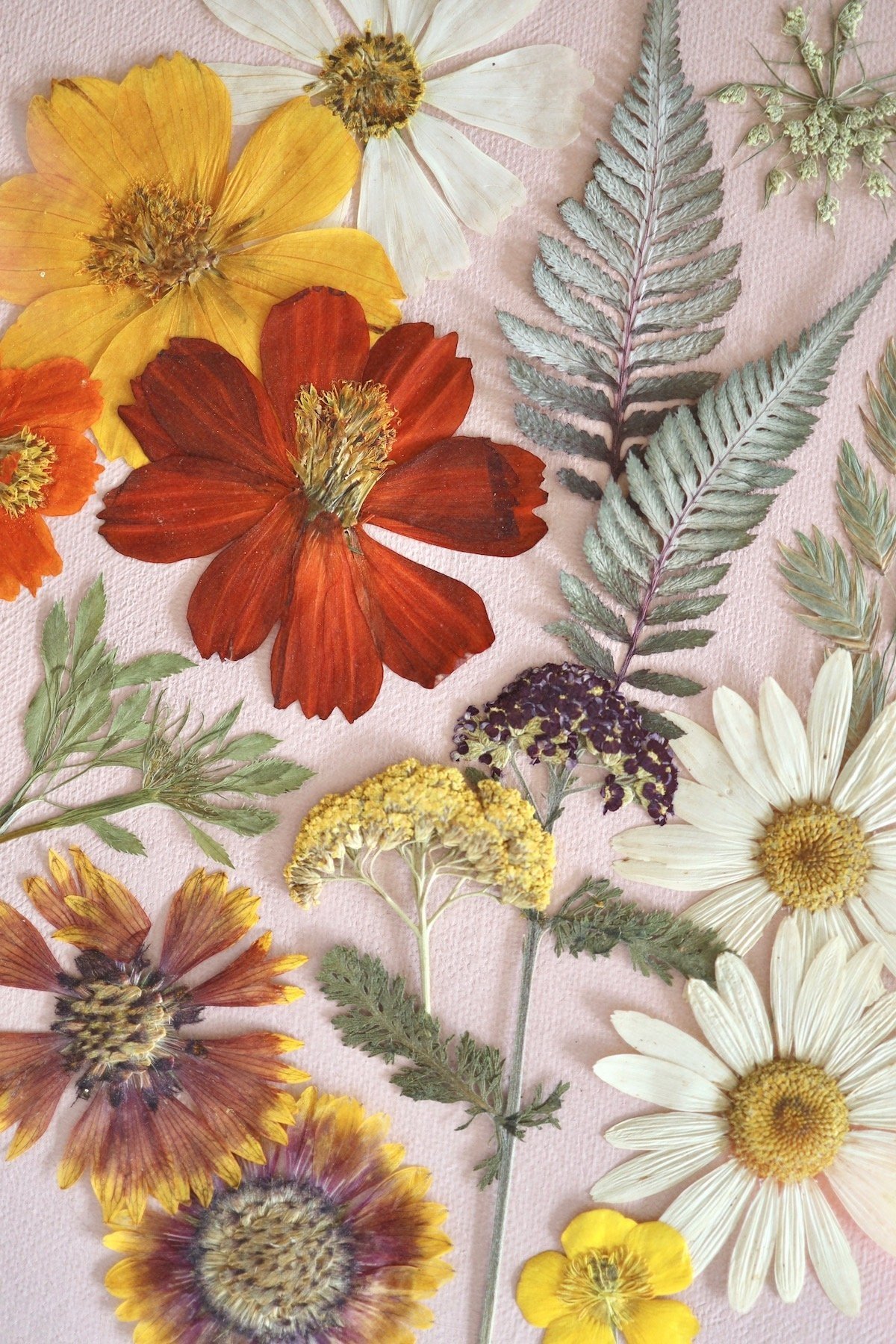Foraging Wildflowers For Pressing
Spring and Summer are the ideal times for flower picking. You can enjoy fresh blooms for a few days and preserve them after for various projects. There are two simple steps to follow when foraging flowers for pressing: make sure the flowers are dry at the time of picking and have the proper tools ready.
“My favorite to-go tool is Fiskars Garden Herb Snip. These cutters are lightweight, sharp, with a nice grip. They measure about 5 inches in length and come with a blade sleeve that offers safe storage and protects blades from damage.”
Refrain from picking flowers after the rain and avoid collecting them in the early morning. The best foraging practice is to pick flowers after the morning dew has dried and at least two days after rain to ensure they are free of excess moisture. Otherwise, if overly wet, flowers almost always mold inside the press.
Having a flower press handy helps tremendously. I always keep a small 8x8" inch travel press in my car. Press of this size easily fits into a backpack or medium size purse. If this is unavailable, a good old zip lock bag is a good short-term alternative for collecting the florals or you can also take a notebook and place foliage right inside. A zip lock bag, however, keeps flowers fresh only for a short period of time, so make sure you place them inside the press as soon as you have a chance. Another way of keeping your flowers fresh before pressing them is to bring a vase and keep them inside the water until their final destination. Note: Always cut your flower stems at a 45-degree angle to increase the surface area which allows flowers to absorb more moisture and stay fresh longer.
Bring the scissors or some sort of pocket tool that will help you cut some of the thicker flower stems and grass. My tool of choice is the small, lightweight cutters by Fiskars. These are sharp, and precise and they easily fit into a pocket.
When it comes to sourcing, explore all different types of flowers and preserve them using different methods to find out which ones you like best. Below is a short list of wildflowers that preserve well.
Happy foraging!
Additional tips on the selection of wildflowers
Some of the commonly found wildflowers that are suitable for pressing are buttercup, blanket flower, chamomile, daisy, larkspur, poppy, queen Anne’s lace, red clover, violet, yarrow, wild cosmos, and roses. No need to limit yourself to flowers only – snag some greenery such as grass and leaves as well! Grass such as Kentucky bluegrass, rescuegrass, sea oats, and tall fescue press very easily and make perfect fillers for the floral artwork. On the other side, black-eyed Susan, coneflower, gloriosa daisy, and wild thistle are in the group of flowers that do not press well but can be air-dried instead. Used as a home decor, dried flowers look lovely and certainly make every room look prettier.



